Hops in Beer Brewing: Willamette
Published: August 4, 2025 at 4:51:51 PM UTC
In the Pacific Northwest, craft beer aficionados understand the significance of selecting the right hop varieties. One such variety is celebrated for its mild, spicy, and earthy aroma. This characteristic makes it a cornerstone in many breweries. Introduced to beer brewing in the 1960s, this dual-purpose hop has earned its place for its adaptability. It serves both as a bittering agent and for flavor/aroma enhancements. This versatility has solidified its position as a brewer's favorite.
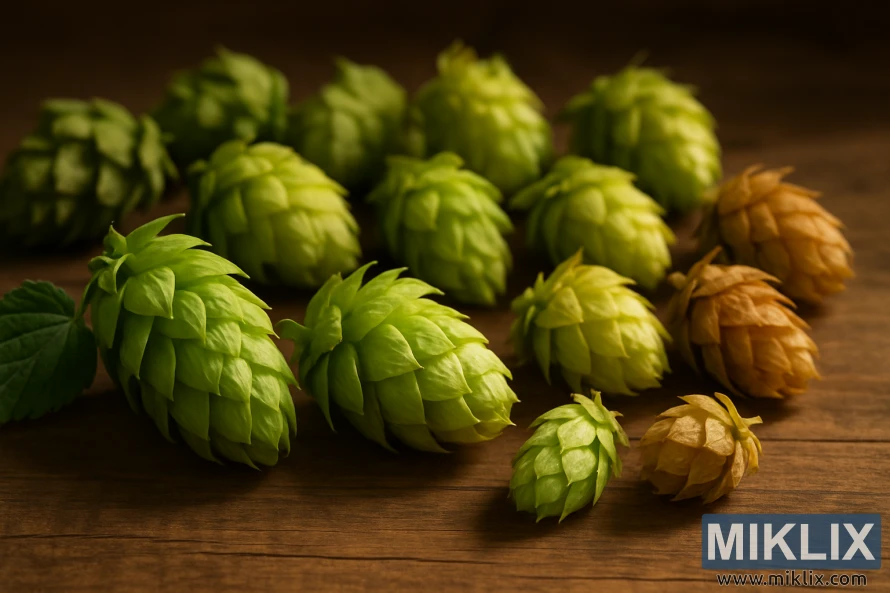
Key Takeaways
- Craft beer brewers favor a specific hop variety for its unique aroma.
- The Pacific Northwest is renowned for its craft beer scene.
- Hop varieties play a critical role in the brewing process.
- Dual-purpose hops are valued for their versatility.
- Specific hop varieties are used for both bittering and flavor/aroma additions.
Understanding Willamette Hops
Originating in the 1960s, Willamette hops were created to enhance the qualities of Fuggle hops. They are a triploid seedling of the English Fuggle variety. This development aimed to increase yield while keeping a similar mild, spicy, and earthy aroma.
Willamette hops have become a cornerstone in the brewing world. Their versatility and consistent quality make them ideal for various beer styles. Key traits include:
- A mild, earthy flavor profile
- A spicy and herbal aroma
- A triploid variety, making them a seedless hop option
- Higher yield compared to their Fuggle predecessors
These characteristics make Willamette hops a preferred choice for brewers. They are valued for adding depth and complexity without dominating other ingredients. This versatility is essential for creating a wide range of beer styles, from traditional ales to modern lagers.
The lineage of Willamette hops is fascinating. As a direct descendant of Fuggle, they inherit many of Fuggle's desirable traits. This development marks a significant leap in hop breeding, providing brewers with a reliable, high-quality ingredient.
Using Willamette hops offers several benefits:
- Consistent flavor and aroma profiles
- Versatility in brewing applications
- Higher yields for commercial growers
The Distinctive Profile of Willamette Hops
Willamette hops are known for their mild, spicy, and earthy aroma. This makes them a favorite among brewers. They are versatile, fitting well into many beer styles.
These hops have a mild herbaceous character, with spicy, peppery, or earthy notes. This complex aroma allows brewers to create beers with unique flavors.
The sensory description of Willamette hops is complex. They offer a range of flavors and aromas that are both unique and appealing. Brewers value the subtle yet distinctive character they bring to beers.
- Mild herbaceous character
- Spicy, peppery, or earthy aroma
- Versatile ingredient for various beer styles
Willamette hops are perfect for traditional beer styles, like English ales and lagers. Their mild flavor makes them ideal for brewers aiming to create balanced and refined beers.
Understanding Willamette hops' unique profile opens up new possibilities in brewing. Whether crafting a classic ale or exploring new flavors, Willamette hops provide endless creative opportunities.
Growing Regions and Harvest Seasons
The Pacific Northwest is the epicenter for Willamette hop cultivation, thanks to its mild climate and fertile soil. This region, spanning Oregon, Washington, and Idaho, offers the perfect conditions for hop growth.
The Pacific Northwest's unique climate and soil are ideal for Willamette hops. Its mild summers and wet winters facilitate a slow maturation process. This contributes to the hops' complex flavor profile.
The harvest season for Willamette hops falls in late August and early September. During this time, hops are hand-picked and dried to maintain their quality and flavor.
Several factors influence the growing regions and harvest seasons of Willamette hops:
- Climate: Mild winters and cool summers are essential for the slow maturation of the hops.
- Soil Quality: Rich, well-drained soil is critical for healthy hop growth.
- Altitude: The region's varied altitude allows for a staggered harvest, enabling farmers to manage their crops more effectively.
- Daylight Hours: The Pacific Northwest's long daylight hours during the summer months contribute to the hops' robust flavor and aroma.
Understanding these factors is vital for brewers who rely on high-quality Willamette hops. By appreciating the conditions under which these hops are grown, brewers can better appreciate the nuances they bring to their brews.
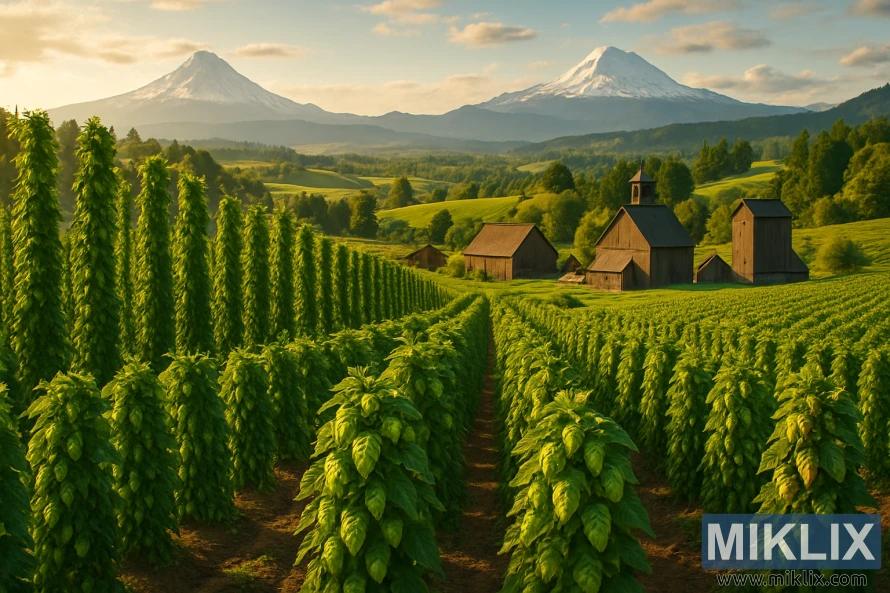
Essential Characteristics for Brewers
For brewers, grasping the key traits of Willamette hops is vital. These hops are celebrated for their balanced brewing qualities, making them a cornerstone in many beer recipes.
The alpha acid composition of Willamette hops falls between 4.5% and 6.5%. This moderate to high alpha acid content positions them well for bittering. They add a clean bitterness that boosts the beer's flavor profile.
Willamette hops also play a role in the beer's aroma and taste. They are recognized for their earthy, herbal, and slightly spicy flavors. These notes enhance a range of beer styles.
When using Willamette hops in brewing, brewers should keep these traits in mind:
- Alpha acid content: 4.5-6.5%
- Flavor and aroma contributions: earthy, herbal, spicy
- Versatility in brewing: suitable for bittering, flavor, and aroma additions
Understanding these essential characteristics allows brewers to harness Willamette hops effectively. This enables them to craft complex, balanced beers that highlight the unique qualities of these hops.
Aroma and Flavor Contributions
Breweries often choose Willamette hops for their mild, spicy, and earthy taste. The unique aroma and flavor of Willamette hops make them a favorite among brewers. They add a complex flavor profile that complements many beer styles.
The flavor of Willamette hops is mild, spicy, and earthy. These traits make them a great choice for various beer styles, from pale ales to porters. The subtle bitterness and rich flavor of Willamette hops allow brewers to create beers with depth and complexity.
Some of the key aroma and flavor characteristics of Willamette hops include:
- Mild earthy undertones
- Subtle spicy flavors
- A hint of herbal notes
These characteristics combine to create a rich and complex flavor profile. This enhances the overall character of the beer. By using Willamette hops, craft brewers can create unique and delicious beers. These showcase the versatility of this popular hop variety.
Best Beer Styles for Willamette Hops
Willamette hops bring a distinct flavor and aroma to various beer styles. Their mild, spicy, and earthy notes make them a favorite among brewers. This versatility is key to their popularity.
In traditional English ale, Willamette hops shine. Their subtle flavor and aroma perfectly complement the malt, creating a balanced beer. They also work well in American pale ales, adding earthy depth to the hop profile.
- Porters and stouts, where the hop's earthy flavor adds depth
- Pale lagers, where the hop's mild aroma provides a crisp finish
- Amber ales, where the hop's spicy notes enhance the malt character
Choosing the right beer style is essential to showcase Willamette hops' unique qualities. This allows brewers to craft a wide array of flavors and aromas. Such diversity caters to a broad range of palates.
Brewing Techniques and Timing
To maximize the flavor and aroma of Willamette hops, brewers must carefully consider their brewing techniques and timing. Willamette hops are versatile and can be added at various stages of the brewing process to achieve different effects.
When it comes to brewing with Willamette hops, the timing of hop additions is critical. These hops can be used for bittering, flavor, and aroma contributions, depending on when they are added during the brewing process.
For bittering, Willamette hops are typically added early in the boil, usually within the first 10-15 minutes. This allows their alpha acids to isomerize and contribute to the beer's bitterness.
For flavor and aroma, Willamette hops are added later in the boil or even during the whirlpool or dry-hopping stages. Late boil additions, typically within the last 5-10 minutes, help preserve the hop's delicate flavor and aroma compounds.
The specific brewing technique and timing will depend on the brewer's goals and the style of beer being brewed. Experimenting with different hop addition times can help brewers achieve the desired balance of bitterness, flavor, and aroma in their beers.
- Early boil additions for bittering
- Late boil additions for flavor
- Whirlpool or dry-hopping for aroma
By mastering the brewing techniques and timing for Willamette hops, brewers can unlock the full flavor and aroma of these hops. This allows them to create complex, balanced beers that showcase their unique characteristics.
Hop Storage and Handling
Proper storage and handling of Willamette hops are essential for preserving their quality and flavor. These hops, like others, are sensitive to temperature, light, and moisture. Maintaining the right conditions is key.
For optimal storage, Willamette hops need a cool, dry environment. Temperatures at or below freezing slow down the degradation of their alpha acids and essential oils. This helps preserve their flavor and aroma.
It's vital to keep Willamette hops away from light and moisture. Light exposure can degrade their flavor and aroma. Moisture, on the other hand, can lead to mold and bacteria growth, further reducing quality.
Effective handling involves minimizing air exposure and using airtight containers. These should protect against light and moisture. Storing hops in a refrigerator or freezer helps maintain the necessary low temperature.
- Store Willamette hops in airtight containers or packaging.
- Keep them away from light and moisture.
- Maintain cool or freezing temperatures.
By adhering to these storage and handling practices, brewers can ensure their Willamette hops remain of high quality. This is critical for producing exceptional beers.
Alternative Hop Combinations
The art of blending hops, including Willamette, allows brewers to craft distinctive beer profiles. By combining Willamette hops with other hop varieties, brewers can create complex and unique flavor and aroma profiles.
Willamette hops are versatile and can be blended with a variety of other hops to achieve different characteristics. Some popular hop varieties to combine with Willamette include:
- Cascade hops for a citrusy twist
- Centennial hops for a balanced bitterness and flavor
- Chinook hops for a robust pine flavor
Blending hops is an art that requires understanding the characteristics of each hop variety and how they interact. Factors such as the alpha acid content, aroma profile, and the timing of hop additions play a critical role in the final flavor and quality of the beer.
For instance, adding a small amount of a strongly flavored hop like Chinook to Willamette can create a balanced yet complex flavor profile.
Experimenting with different hop combinations is a straightforward way for brewers to innovate and differentiate their beers. By understanding how Willamette hops work with other varieties, brewers can unlock a wide range of flavor possibilities.
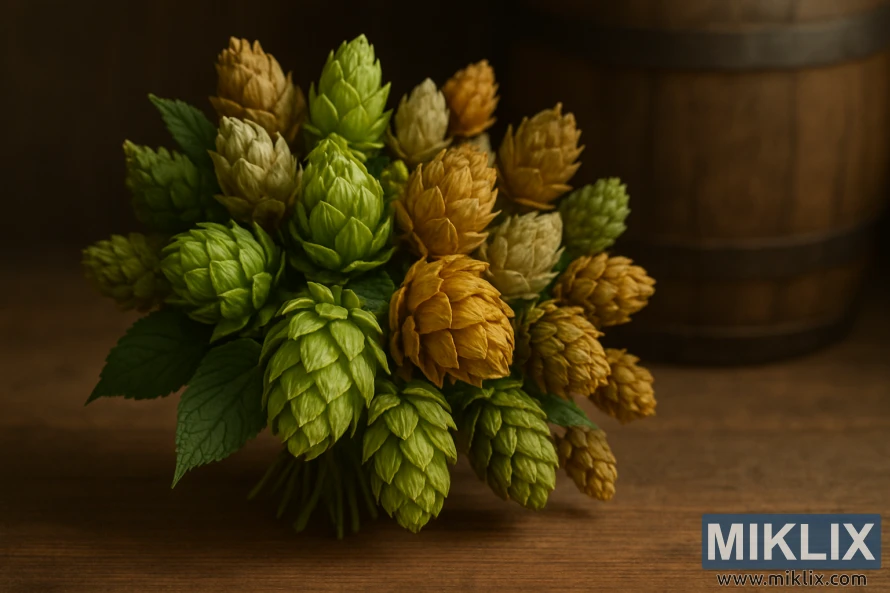
Common Brewing Challenges
Willamette hops offer versatility but also present brewers with specific hurdles. These include optimizing hop utilization and ensuring flavor stability. Brewers must carefully manage these aspects to craft high-quality beers.
Optimizing hop utilization is a primary challenge with Willamette hops. Hop utilization measures how efficiently hops release their alpha acids, bitterness, and flavor compounds into the beer. Boil time, hop form, and brewing technique all play a role in this process.
To enhance hop utilization, brewers can tweak their techniques. For example, a longer boil time can extract more bitterness from hops. Proper storage of hops before use also helps preserve their potency and flavor.
Flavor stability is another critical challenge. Willamette hops have delicate flavors and aromas that can degrade during brewing. To keep flavors stable, brewers should avoid heat, light, and oxygen exposure.
Strategies to improve flavor stability include:
- Using a mix of hop varieties for a balanced flavor.
- Adding hops at various brewing stages for a complex aroma.
- Employing techniques that reduce oxidation and heat exposure.
By tackling these challenges, brewers can effectively use Willamette hops to create a variety of high-quality beers.
Commercial Success Stories
Many breweries have found commercial success by using Willamette hops. These hops are prized for their unique characteristics. They are a go-to choice for brewers aiming to craft distinctive beers.
Willamette hops have been a key ingredient in various commercial beers. They have helped create pale ales, porters, and lagers. This versatility has made them a favorite among beer lovers.
Some notable examples of breweries that have successfully used Willamette hops include:
- Breweries that specialize in craft beers, where Willamette hops are used to add complexity and depth.
- Large-scale breweries that incorporate Willamette hops into their flagship beers, leveraging the hop's popularity.
- Breweries that experiment with Willamette hops in unique beer styles, pushing the boundaries of what is possible with this versatile hop.
The success of these breweries highlights the importance of Willamette hops in commercial beer production. By mastering the use of Willamette hops, brewers can craft beers that resonate with a broad audience.
Sustainability and Environmental Impact
The cultivation of Willamette hops is deeply rooted in sustainable farming practices. This approach not only ensures the long-term viability of hop production but also minimizes the environmental footprint of brewing operations.
Willamette hops are grown using methods that prioritize environmental stewardship. These practices include efficient water use, integrated pest management, and soil conservation techniques. By adopting such sustainable farming methods, hop farmers can reduce their reliance on non-renewable resources and lower their overall environmental impact.
The environmental impact of Willamette hops production is further mitigated by the use of renewable energy sources and waste reduction programs. Many hop farms are transitioning to renewable energy to power their operations, significantly reducing greenhouse gas emissions.
Some key sustainability initiatives in Willamette hops farming include:
- Implementing crop rotation and soil conservation to maintain soil health
- Using integrated pest management techniques to minimize chemical use
- Investing in renewable energy sources, such as solar and wind power
- Reducing water waste through efficient irrigation systems
By supporting sustainable hop farming practices, brewers can contribute to a more environmentally friendly supply chain. This not only benefits the environment but can also enhance the quality and consistency of the hops used in brewing.
As the brewing industry continues to evolve, the importance of sustainability in hop production will remain a key consideration. By prioritizing environmental stewardship, brewers can help ensure a sustainable future for their operations and the wider community.
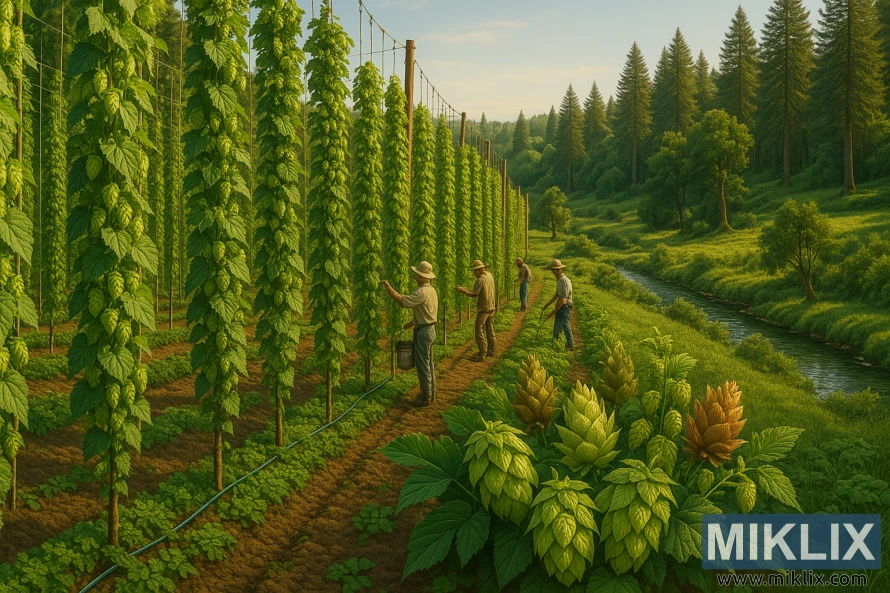
Recipe Development Guidelines
Willamette hops are a versatile ingredient in beer brewing, suitable for a variety of beer styles. Their mild, earthy flavor and aroma make them ideal for pale ales to porters.
When developing a beer recipe with Willamette hops, brewers must consider several key factors. First, they should understand the hop's alpha acid content, which typically ranges from 4-6%. This relatively low alpha acid level means Willamette hops are often used for their flavor and aroma contributions, not bitterness.
To effectively incorporate Willamette hops into a beer recipe, brewers should consider the following guidelines:
- Use Willamette hops in late boil additions or dry hopping to maximize their flavor and aroma contributions.
- Balance the earthy, herbal notes of Willamette hops with complementary malt profiles and other hop varieties.
- Experiment with different beer styles to find the best match for Willamette hops, such as English-style ales or amber ales.
- Consider the overall hop bill and adjust the quantity of Willamette hops based on the desired intensity of flavor and aroma.
By following these guidelines and understanding the unique characteristics of Willamette hops, brewers can create a wide range of delicious beer recipes. Whether you're brewing a traditional English ale or experimenting with a new beer style, Willamette hops offer a versatile and flavorful ingredient to enhance your creations.
Quality Control Measures
Ensuring the quality of Willamette hops is essential for maintaining their unique flavor and brewing performance. It's critical to meet these standards for producing top-notch beers.
Several key factors are considered when evaluating the quality of Willamette hops:
- Alpha acid content: This is a critical parameter as it affects the bitterness and stability of the beer.
- Flavor stability: Evaluating the hops' flavor profile and its stability over time is essential for predicting their performance in brewing.
- Moisture content: Proper drying and storage techniques help maintain an optimal moisture level, preventing spoilage and preserving quality.
To ensure that Willamette hops meet these quality standards, breweries and hop suppliers implement rigorous testing and evaluation protocols. This includes:
- Regular sampling and analysis of hop batches to determine their alpha acid content and other relevant characteristics.
- Storage and handling practices that minimize exposure to heat, light, and moisture, which can degrade hop quality.
By maintaining stringent quality control measures, breweries can ensure that their Willamette hops deliver consistent flavor and aroma profiles. This contributes to the overall quality of their beers.
Effective quality control also involves monitoring the supply chain, from harvesting to storage and delivery. This prevents contamination or degradation of the hops. A thorough approach safeguards the integrity of Willamette hops, supporting the production of high-quality beers.
Future Trends and Innovations
The craft brewing industry is constantly evolving, with Willamette hops leading the way in new trends and innovations. Hop breeding programs are ongoing, aiming to create new varieties. These will have improved flavor profiles and better disease resistance.
These advancements will solidify Willamette hops' market position. They will offer brewers more versatility and creativity in their recipes. Key areas of focus in hop breeding include:
- Developing new hop varieties with unique flavor and aroma profiles
- Improving disease resistance to reduce environmental impact
- Enhancing yield and vigor for more efficient cultivation
To keep up with the latest trends, brewers should attend industry conferences. They should also follow hop breeding programs and engage with suppliers. This way, they can learn about new and emerging hop varieties.
By embracing these innovations, brewers can continue to innovate in beer brewing. They can create unique and exciting beers that showcase Willamette hops' versatility.
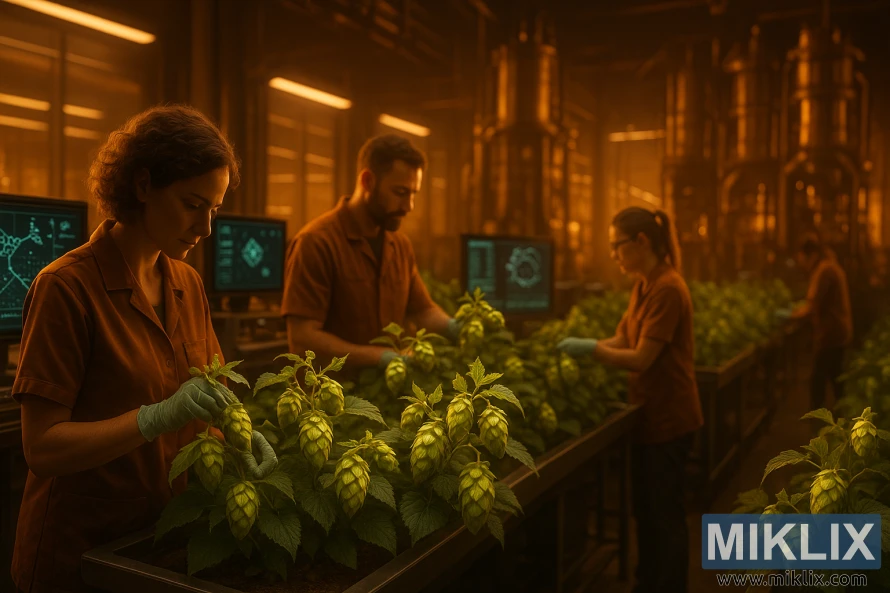
Conclusion
Mastering Willamette hops is a key skill for brewers, thanks to their versatility in beer brewing. They bring a unique flavor profile that can elevate a wide range of beer styles. This includes everything from pale ales to porters.
To effectively use Willamette hops, brewers must consider several factors. These include the growing region, harvest season, and storage conditions. Understanding these aspects allows brewers to refine their techniques. This results in high-quality beers that highlight the distinct qualities of Willamette hops.
In summary, Willamette hops are a valuable asset for brewers. By mastering their use, brewers can broaden their creative horizons. They can craft exceptional beers that impress their customers. As the brewing industry grows, the need for premium hops like Willamette will only increase. It's vital for brewers to stay updated and embrace new trends and innovations.
Further Reading
If you enjoyed this post, you may also like these suggestions:
